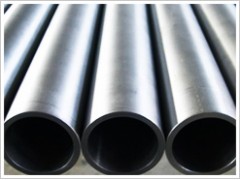Duplex Stainless Steels have a structure that contains both ferrite and austenite. Duplex alloys have higher strength and better stress corrosion cracking resistance than most austenitic alloys and greater toughness than ferritic alloys, especially at low temperatures. The corrosion resistance of duplex alloys depends primarily on their composition, especially the amount of chromium, molybdenum, and nitrogen they contain.
|
CHEMICAL COMPOSITION
|
|
UNS
|
JIS
|
En
|
DIN
|
|
S31803
|
QS2205
|
1.4462
|
X2CrNiMoN22-5-3
|
|
S32205
|
QS2205
|
1.4462
|
X2CrNiMoN22-5-3
|
|
S32304
|
|
|
|
|
S32750
|
|
1.4410
|
X2CrNiMoN25-7-4
|
|
S32760
|
|
|
|
|
|
MECHANICAL PROPERY
|
|
UNS
|
Tensile Strength
Min, Mpa
|
Yield Strength
Min, Mpa
|
Elongation in 2INCH.
Or 50mm Min, %
|
Hardness Max,
HRC
|
|
S31803
|
620
|
450
|
25
|
30
|
|
S32205
|
655
|
485
|
25
|
30
|
|
S32304
|
690
|
450
|
25
|
30
|
|
S32750
|
800
|
550
|
25
|
32
|
|
S32760
|
750
|
550
|
25
|
32
|
|
|
APPLIED STANDARD
|
|
ASTM A789/ASME SA789 , ASTM A790/ASME SA790, ASTM A312/ASME SA312, ASTM A240, EN10216-5,
Conditions
DIN17456, DIN17458, JIS G3459, JIS G3463, GOST 9941
|





